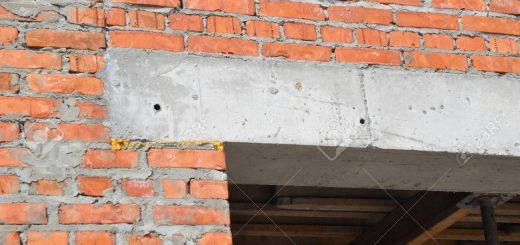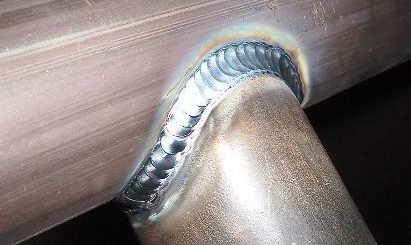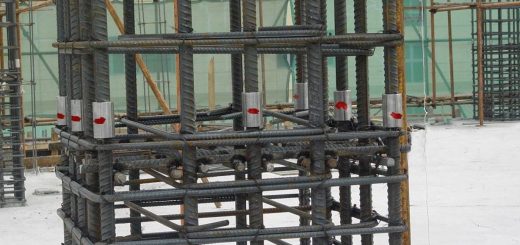Excavation for Foundation [shallow and deep]
Excavation for foundation is not always simple as it does in the construction of a simple pad foundation. When it becomes foundation are complex, similarly, the excavation for foundation becomes critical.
The effect of the water table needs to be considered for the design and construction of the foundation.
Geotechnical parameters used for the design are affected by the presence of the water table. Therefore, special attention shall be made during the design on the effect of the water table.
There are special occasions that we cannot lower the water table as it could affect the surrounding structures. Especially in basement construction, the depth of the basement could be varying around 3m- 6m.
This depth may even be more than these values. If the water level is reduced continuously, the water level in the surrounding area will also be reduced gradually.
Figure 01 indicated the reduction of the water level.

When the water table is lowered, the pour water pressure will be dropped.
If there are structures nearby having not supported pile and place on the ground, they could settle. Initially, cracks will appear in the brick walls and it can further be developed to failures of structural elements depending on the settlement causes in the foundations.
Therefore, especially in deep basements, attention is made not to lower the water table. Different techniques are being used to support the excavation and to seal the water seepage into the excavation area.
A few of them are as follows.
- Secant piling
- Diaphram walls construction
- Sheet pile walls with lateral supporting systems
Secant Piling Most Popular Excavation method for Foundation
Firstly, suggest reading articles like how to select foundation type which provides more information on the foundation types.
Secant pile is a retaining wall that is constructed to retain earth in deep excavations.
Secant pile consists of male and female file or it is called primary and secondary piles.
The secondary pile consists of a reinforcement cage and the primary file is cast without a reinforcement cage.
Firstly, primary files are cast and then the secondary pile is constructed in between the primary piles in a way that it overlaps with primary piles as shown in Figure 02.

Usually, these piles are cast into the bedrock level to have the cantilever action for resisting overturning and to avoid the water seepage into excavated areas.
Reinforcement design shall be done when it is used as a retaining wall by considering all the loads cases such as soil pressure, water pressure, surcharge load, etc.
When it is costly to have large diameter piles to retain the piles as free cantilevers, lateral bracings are provided in deeper excavations as shown in Figure 03.

Diaphragm Walls – Excavation for Foundation
A diaphragm wall is a concrete wall constructed by excavating a deep trench.
It can be constructed as to cast-in-situ wall or as a precast wall. When there are space limitations, diaphragm walls are constructed as it does not require much space. Excavation for foundation done widely using this method today.
Further, in some constructions, these walls are used as part of the permanent structure.
Presently there are machines that even can construct a 50m deep diaphragm walls.
However, depending on the project requirement and based on the bedrock level, termination could be done.
Most of the time the wall will be anchored into the bedrock to have a restraint on overturning moments.
Sheet Pile Wall Excavation for Foundation
The most commonly used excavation supporting method is the sheet pile wall system due to its simplicity and the low cost of construction when compared with other methods. Excavation for foundation can be done easily with this method.
However, it becomes more complicated for the construction team when this method is used to support deep excavations due to the increasing number of lateral bracings to be provided.
Sheet pile walls need to be supported in regular intervals to balance the loading. Therefore, more and more supports need to be provided. It will be an obstruction for construction work at some point.
There are methods if there is sufficient spacing around the excavation, to avoid the latera bracings internally. Anchoring systems could be introduced as shown in Figure 04 to avoid obstructions.

Effect of Water Table on Shallow Foundations
The availability of the water table above the foundation or the base level always makes issues to the construction team.
The effect of the water table needs to be carefully handled without violating the assumptions or considerations made in the design.
The effect of the water table shall be considered until the construction proceeds above the groundwater level.
Most of the time, drainage systems are introduced to avoid the water penetrating above the excavated level.

Based on the water height and considering the permeability of the soil, the number of drains and well are calculated.
Drains are place interconnected to transfer the water effectively into the wells. Water will be pumped out continuously until the construction is completed or as required by the design.
If the pumping is stopped after the construction of part of the walls and base of a tank, it could uplift due to the rise of the water table. Therefore, termination of pumping work shall be done as directed by the design.
Further, pumping shall always be done without any objection.
Especially when the waterproofing membrane is laid, termination or obstruction of pumping will increase the pour water pressure on the waterproofing membrane and as a result, it could elongate and fail.
Groundwater recharging is one of important factor needs to be considered even the depth of excavations are around 3m if there are structures located closely.
It is advisable to recharge the groundwater through wells located around the excavation to reduce the lowering of the water table. It will reduce the impact on other structures due to the settlement cause as a result of the reduction in the pour water pressure.
The Wikipedia article Foundation(Engineering) is worth reading to start with the designs.



